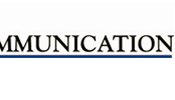

|
|
| Learn what to say... and what NEVER to say! |
|
|
Our PIE Model of Communication
|
Conflict in the Workplace: Resolve or Manage? By Edward Leigh, MA According to the dictionary, one of the definitions of the word "manage" is, "To continue to get along; carry on." When looking up the word "resolve" in the dictionary, this is one of the definitions you will find, "To change or convert." In dealing with conflict in the workplace, we place a lot of emphasis on resolving, however that is not always possible. In many cases, we may not be able to resolve the issue, but we can manage it and still have a productive environment. Understanding Conflict Conflict inevitably occurs in all workplace settings. This is because people have different needs, preferences, and values. With the rapid changes in the workplace, the opportunity for conflict increases greatly. There is no way around it – conflict is here to stay! Conflict is a natural part of life. There are many misconceptions regarding conflict. Many of our views about conflict are misperceptions, not facts. Conflict is not necessarily a negative experience and avoiding conflict could result absolute havoc. I once worked in an office with a lady who was very sweet and never wanted to "ruffle feathers." It turns out that another person in the office was engaged in unethical behavior, unbeknownst to everyone but this one lady. However she was fearful of saying anything because she wanted to avoid conflict. The employee's unethical behavior escalated and when it was finally discovered, it was a nightmare. The issue could have been resolved much sooner, but someone was avoiding conflict. Conflict does not mean that a working relationship is going bad. Actually conflict can be a positive experience! Instead of looking at conflict as inherently terrible, you can choose to see conflict as a natural and inevitable consequence of growth and diversity. This is also an opportunity for mutually beneficial change. The differences in opinion can be a time of exciting progress. Conflict is a very emotional process and this stimulates ideas; this calls forth expansion into new and exciting ventures. Conflict is a call to understand competing, but not necessarily incompatible, preferences and values. Steps to Managing Conflict It is highly recommended that the results of this process be written down. The process of writing also helps people understand the issues. We have all heard the old saying, "Get it in writing." Identify Issues: What is the issue that is causing the conflict? People may have different views on what exactly the issues are – this is a critical step to make sure everyone is talking about the same subject. Understand Everyone's Interest: This critical step is often overlooked. This is a time we need to put away our own opinions and listen carefully to other people. Focus on understanding where the other person is coming from with an open mind. List Possible Solutions (Options): This is a time to brainstorm ideas. At this time, no evaluations are done. Every option is listed – let the creativity flow! People must feel at ease that they can say whatever comes to mind. No judging! Evaluate Options: For each option listed, write out the pros and cons. This may take some time, but it is a very critical step in finding the best solution to the issue. Select an Option or Options: What appears to be the best option? Is there a way to "bundle" a number of options together for a more satisfactory solution? Document the Agreement(s): Don’t rely on your memory. Writing it down will help you think through all the details and implications. Agree on Contingencies, Monitoring and Evaluation: Conditions may change. Make contingency agreements about foreseeable future circumstances (Think "If-Then."). Make a plan for monitoring compliance and follow through. Create opportunities to evaluate the agreements and their implications. For example, "Let's try it this was for three months and then look at it again." Example of Managing Conflict Identify Issues: A person from your department must attend a monthly company meeting. No one wants to be the department representative to attend the meeting. Understand Everyone’s Interest: This is a time for everyone in the department to discuss their feelings about this monthly meeting. List Possible Solutions (Options): An easel and marking pens is brought into the room and options are discussed, such as rotating people, including a different person each month or one person goes for each quarter. Evaluate Options: The pros and cons are listed for each option. Select an Option or Options: After careful discussion, the option selected was "one person goes for two meetings in a row, until everyone has gone, then the cycle is repeated." Document the Agreement(s): An agreement is developed with a calendar listing when different people are responsible for going to the meeting. Agree on Contingencies, Monitoring and Evaluation: Conditions may change. The agreement has contingencies about what to do if people are sick or have other issues preventing them from attending their scheduled meeting. Want a more productive and enriching life? Of course you do! It is time accept the fact that people will have differences of opinions, but that is a good thing! View "managing" conflict as a catalyst for exciting change! |
The Center for Healthcare Communication • P.O. Box 18819 • Cleveland, Ohio 44118-0819 USA Site designed by I Am Orange Media Group |